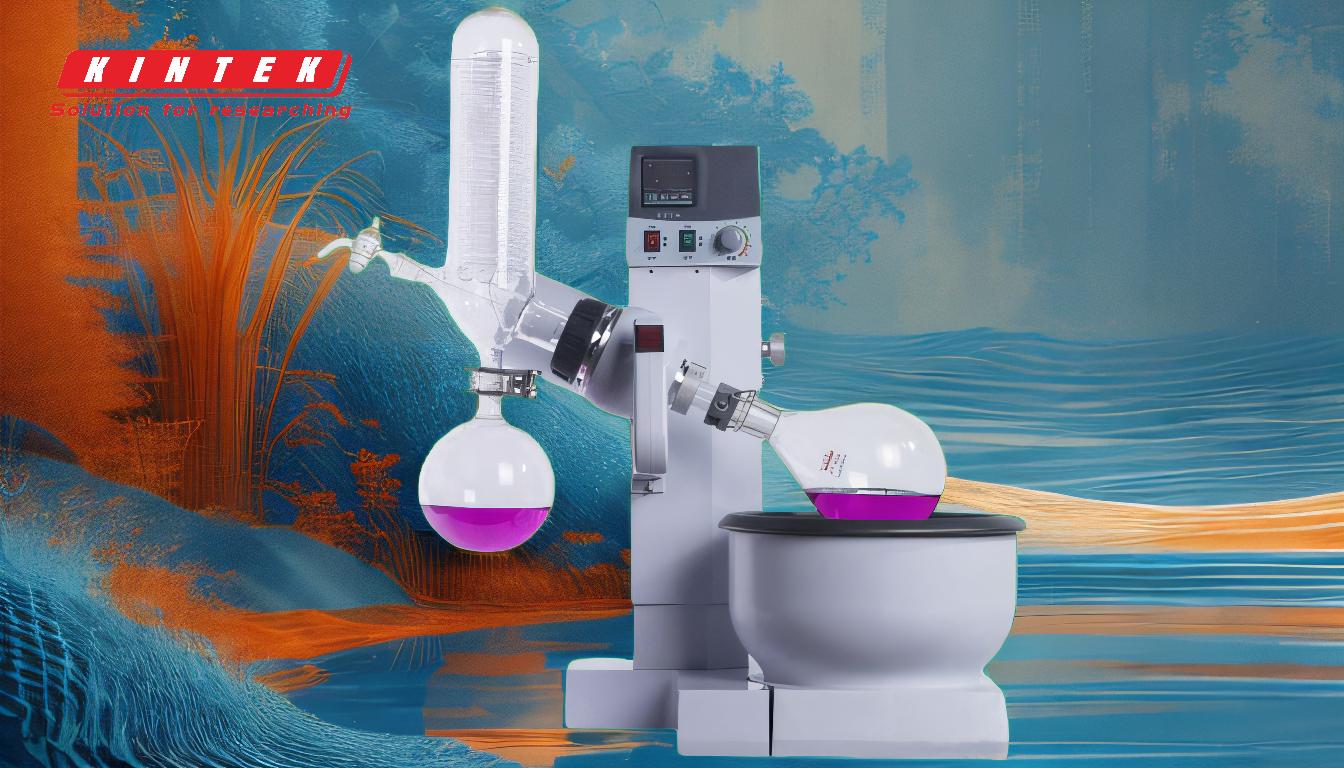A rotary evaporator, commonly referred to as a rotavap or rotovap, is a laboratory instrument designed to efficiently remove solvents from a sample through evaporation. This process is achieved by rotating an evaporation flask under reduced pressure, which increases the evaporation surface area and accelerates the process. The system includes a vacuum pump to maintain a low-pressure environment, a heated liquid bath to provide controlled heating, and a condenser to cool and collect the evaporated solvent. The rotary evaporator is particularly useful for isolating desired compounds after chemical processes, as it allows for the removal of solvents at low temperatures, preserving the integrity of the sample.
Key Points Explained:

-
Principle of Operation:
- The rotary evaporator operates under reduced pressure, which lowers the boiling point of the solvent. This allows the solvent to evaporate at a lower temperature, minimizing the risk of degrading heat-sensitive compounds.
- The evaporation flask is continuously rotated, creating a thin film of the sample on the inner wall of the flask. This increases the surface area for evaporation, enhancing the efficiency of the process.
-
Components of the Rotary Evaporator:
- Evaporation Flask: Contains the sample and is rotated to create a thin film for efficient evaporation.
- Heated Liquid Bath: Provides controlled heating to the evaporation flask, ensuring even and consistent temperature distribution.
- Vacuum Pump: Maintains a reduced pressure environment within the system, lowering the boiling point of the solvent.
- Condenser: Cools the evaporated solvent vapor, converting it back into a liquid state for collection.
- Receiving Flask: Collects the condensed solvent after it has passed through the condenser.
-
Process Steps:
- Rotation and Heating: The evaporation flask is rotated at a constant speed while being heated by the liquid bath. This causes the sample to form a thin film on the inner wall of the flask, facilitating rapid evaporation.
- Evaporation Under Reduced Pressure: The vacuum pump reduces the pressure inside the system, allowing the solvent to evaporate at a lower temperature than its normal boiling point.
- Condensation: The evaporated solvent vapor is directed to the condenser, where it is cooled and condensed back into a liquid.
- Collection: The condensed solvent is collected in the receiving flask, leaving behind any non-volatile substances in the evaporation flask.
-
Applications:
- Solvent Removal: The rotary evaporator is widely used to remove solvents from samples, particularly in processes like column chromatography and separatory-funnel extractions.
- Isolation of Compounds: It is effective for isolating desired compounds after chemical reactions, especially when dealing with low-boiling solvents.
- Preservation of Chemical Integrity: By operating at reduced pressure and lower temperatures, the rotary evaporator helps preserve the chemical structure of heat-sensitive compounds.
-
Advantages:
- Efficiency: The combination of reduced pressure and increased surface area allows for rapid and efficient solvent removal.
- Temperature Control: The ability to operate at lower temperatures minimizes the risk of thermal degradation of sensitive compounds.
- Versatility: The rotary evaporator can be used with a wide range of solvents and is suitable for various laboratory applications.
-
Considerations for Use:
- Vacuum Level: The efficiency of the evaporation process is highly dependent on the level of vacuum achieved. Proper maintenance of the vacuum pump is essential.
- Temperature Control: Precise control of the heating bath temperature is crucial to avoid overheating and potential degradation of the sample.
- Compatibility: Ensure that the materials used in the rotary evaporator (e.g., glassware, seals) are compatible with the solvents and samples being processed.
In summary, the rotary evaporator is a versatile and efficient tool for solvent removal and compound isolation in laboratory settings. Its ability to operate under reduced pressure and at controlled temperatures makes it particularly valuable for handling heat-sensitive materials.
Summary Table:
| Aspect | Details |
|---|---|
| Principle of Operation | Operates under reduced pressure, lowering solvent boiling points. |
| Key Components | Evaporation flask, heated liquid bath, vacuum pump, condenser, receiving flask. |
| Process Steps | Rotation and heating, evaporation under reduced pressure, condensation, collection. |
| Applications | Solvent removal, compound isolation, preservation of chemical integrity. |
| Advantages | High efficiency, precise temperature control, versatility. |
| Considerations | Vacuum level, temperature control, material compatibility. |
Discover how a rotary evaporator can enhance your lab processes—contact our experts today!










